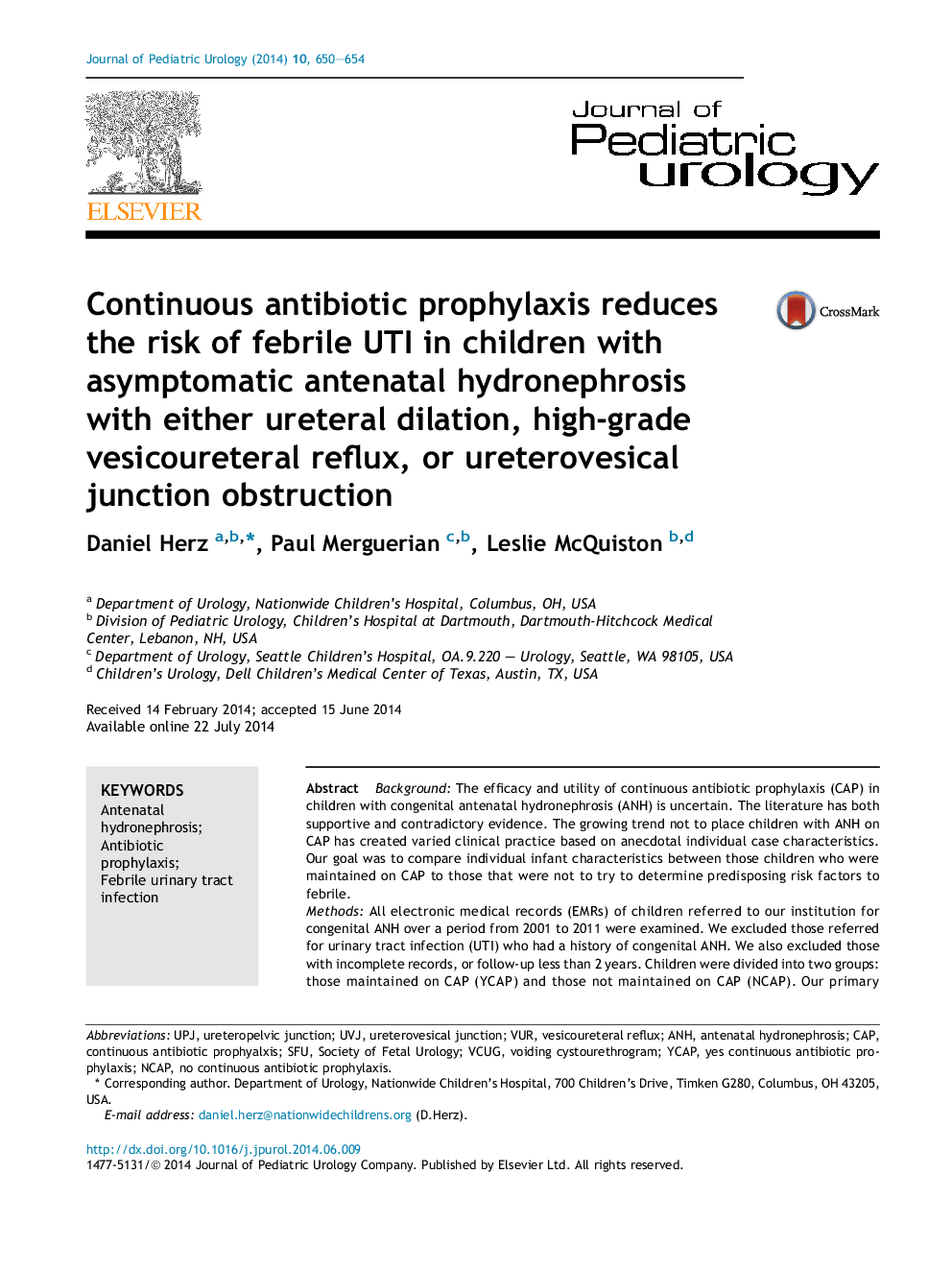| کد مقاله | کد نشریه | سال انتشار | مقاله انگلیسی | نسخه تمام متن |
|---|---|---|---|---|
| 4162610 | 1274285 | 2014 | 5 صفحه PDF | دانلود رایگان |

BackgroundThe efficacy and utility of continuous antibiotic prophylaxis (CAP) in children with congenital antenatal hydronephrosis (ANH) is uncertain. The literature has both supportive and contradictory evidence. The growing trend not to place children with ANH on CAP has created varied clinical practice based on anecdotal individual case characteristics. Our goal was to compare individual infant characteristics between those children who were maintained on CAP to those that were not to try to determine predisposing risk factors to febrile.MethodsAll electronic medical records (EMRs) of children referred to our institution for congenital ANH over a period from 2001 to 2011 were examined. We excluded those referred for urinary tract infection (UTI) who had a history of congenital ANH. We also excluded those with incomplete records, or follow-up less than 2 years. Children were divided into two groups: those maintained on CAP (YCAP) and those not maintained on CAP (NCAP). Our primary endpoint was febrile UTI. Follow-up was at least 24 months. Demographic, perinatal and postnatal clinical data were recorded. Statistical analysis was performed using STATA Version 11.1.ResultsOf the 405 children fitting inclusion criteria, 278 (68.6%) children were maintained on CAP and 127 (31.4%) were not on CAP. The incidence of prematurity, oligohydramnios, perinatal respiratory complications, use of perinatal antibiotics, circumcision status, renal anomalies, associated medical diagnoses, and low birth weight did not differ between the two groups. Overall the incidence of febrile UTI during the follow-up period was 22.2%. The incidence of febrile UTI between the YCAP and NCAP groups was significant (YCAP = 7.9% and NCAP 18.7%, p = 0.021). Multivariate logistic regression using CAP as the dichotomous dependent variable revealed that ureteral dilation, high-grade vesicoureteral reflux (VUR), and ureterovesical junction (UVJ) obstruction were independent risk factors for febrile UTI. More specifically, children with ureteral dilation >11 mm NOT maintained on CAP had a 5.54 (OR = 5.54; CI = 3.15–7.42, p = 0.001) fold increased risk of febrile UTI compared to those maintained on CAP.ConclusionsThe presence of ureteral dilation, high grade VUR, and UVJ obstruction were independent risk factors for development of UTI in children with congenital ANH. Therefore CAP may have a significant role in reducing the risk of febrile UTI in children with ANH with those identifiable risk factors, but otherwise seems unnecessary.
Journal: Journal of Pediatric Urology - Volume 10, Issue 4, August 2014, Pages 650–654